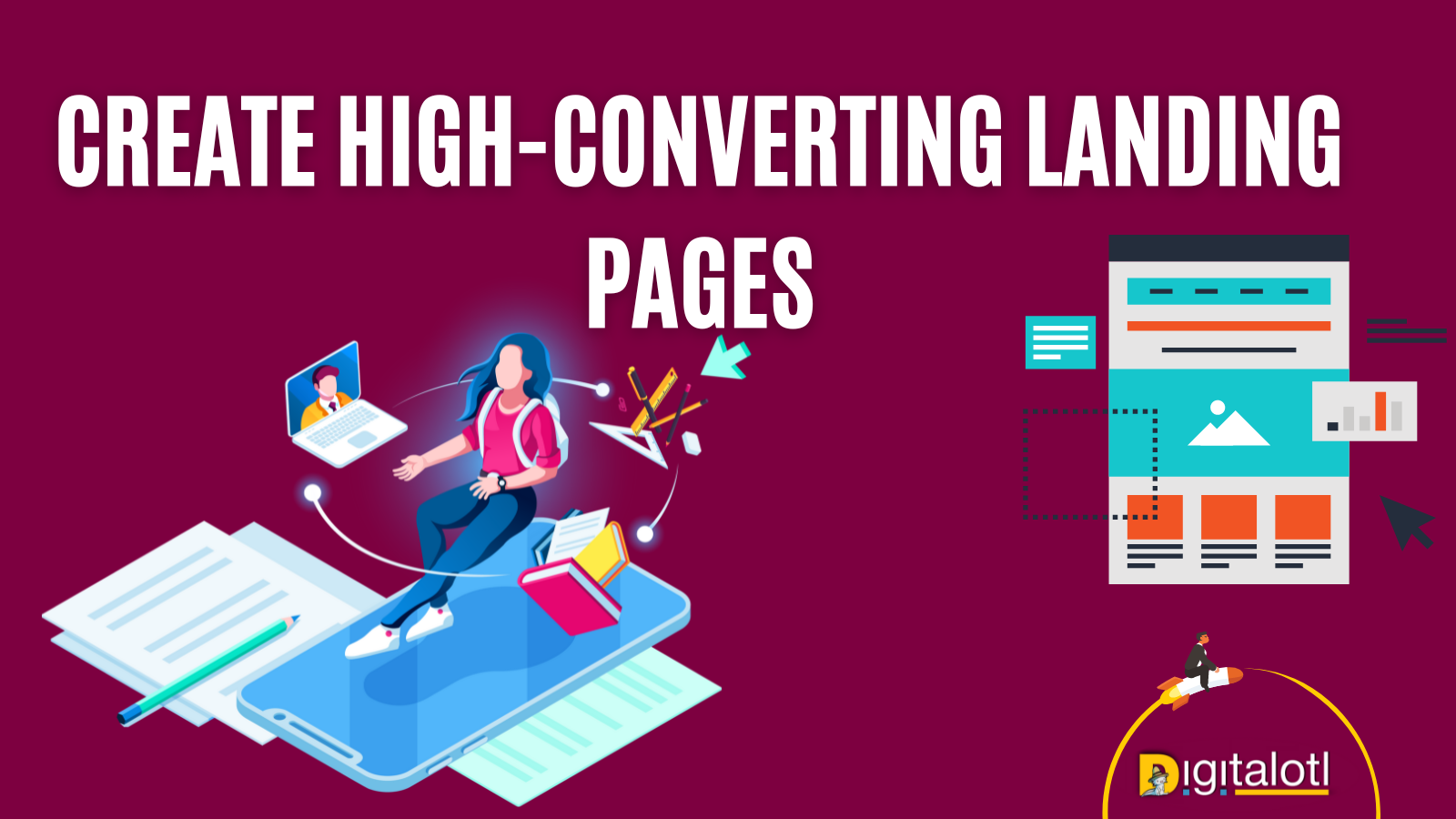In today’s digital landscape, the importance of creating high-converting landing pages cannot be overstated. A landing page is a crucial element of any online marketing strategy, designed specifically to capture visitors’ attention and convert them into valuable leads or customers. In this comprehensive guide, we will explore the key elements and best practices for creating landing pages that not only drive conversions but also help your business succeed.
Table of contents
Understand Landing Pages

Landing pages are standalone web pages that are separate from your main website and serve a specific purpose, often related to a marketing campaign or promotion. They are carefully crafted to present a targeted message to visitors and guide them towards a specific action, such as making a purchase, filling out a form, or subscribing to a newsletter. By focusing on a single objective, landing pages eliminate distractions and increase the likelihood of conversion.
Importance of Landing Pages for Conversion and Business Success
Landing pages hold significant importance in propelling conversions and amplifying the triumph of your business endeavors. They provide a dedicated space where you can communicate your value proposition, highlight key benefits, and address potential objections. By tailoring the content and design of your landing pages to match the expectations and needs of your target audience, you can significantly increase your conversion rates and generate more qualified leads.
Understanding Your Target Audience
Before you start creating your landing pages, it is essential to have a deep understanding of your target audience. By defining your target audience, building buyer personas, and understanding customer motivation, you can craft highly relevant and persuasive copy that resonates with your ideal customers.
Defining Your Target Audience
To define your target audience, start by analyzing your existing customer base and identifying common characteristics, such as demographics, interests, and pain points. This will help you create a profile of your ideal customer and tailor your messaging accordingly.
Building Buyer Personas
Buyer personas encompass fictional depictions of your optimal clientele, formulated through comprehensive market research and factual data. They provide insights into your customers’ goals, challenges, preferences, and decision-making processes. By creating detailed buyer personas, you can better understand your audience’s needs and tailor your landing page content to address them effectively.
Understanding Customer Motivation
To create high-converting landing pages, you must understand what motivates your customers to take action. Conduct surveys, interviews, and research to gain insights into their desires, aspirations, and pain points. By aligning your messaging with their motivations, you can craft copy that speaks directly to their needs and increases the chances of conversion.
Draft Effective Copy
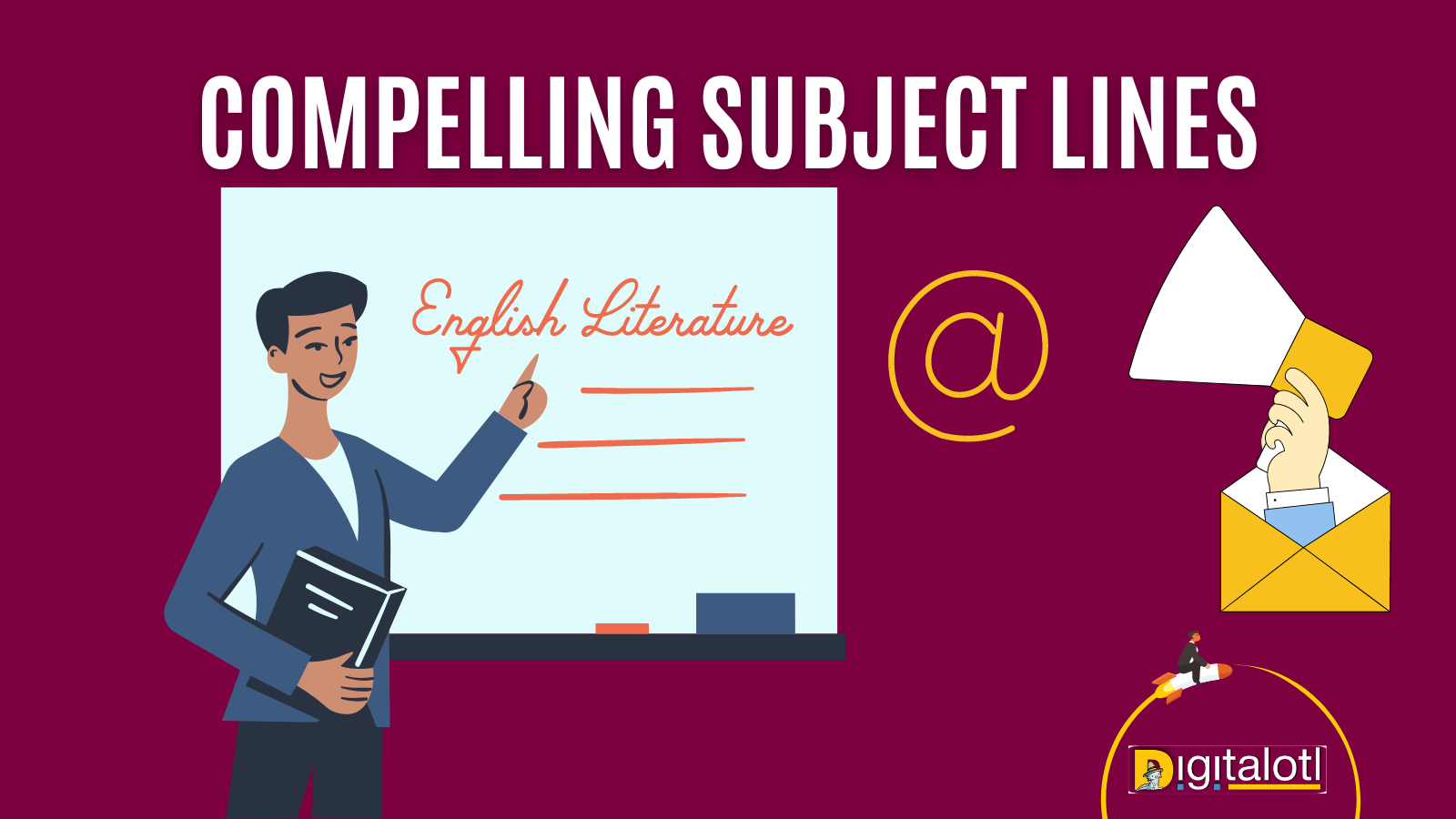
Compelling content serves as the foundation for a landing page that excels in driving conversions. By focusing on the following key elements, you can create persuasive and engaging content that drives action.
Headlines and Subheadings
Captivating headlines and subheadings are crucial for grabbing attention and enticing visitors to stay on your landing page. They should be clear, concise, and highlight the main benefits or solutions you offer. Use power words and emotionally resonant language to evoke curiosity and encourage further reading.
Benefits-Focused Writing
When writing the body content of your landing page, focus on the benefits your product or service provides. Clearly communicate how your offering solves your audience’s problems or improves their lives. Use specific examples, testimonials, and case studies to provide social proof and build trust.
Using strong and compelling Sentence
Compelling Sentence is essential for convincing visitors to take the desired action on your landing page. Use active voice, strong verbs, and clear calls-to-action (CTAs) to guide users towards conversion. Address objections proactively and provide compelling reasons why they should choose your product or service.
Formatting to Improve Readability
To enhance the readability of your landing page, use bullet points, numbered lists, and short paragraphs. Break up the text with relevant images or videos to make the content more visually appealing. Use subheadings to divide the content into scannable sections that allow users to find the information they need quickly.
Designing Your Landing Page
In addition to compelling copy, the design of your landing page plays a crucial role in driving conversions. Consider the following elements and best practices when designing your landing pages.
Elements of a Landing Page
An excellently designed landing page should have a clear and visually appealing layout seamlessly directing visitors towards their intended action. Key elements include a compelling headline, concise and persuasive copy, eye-catching visuals, trust indicators such as testimonials or reviews, and a prominent call-to-action (CTA) button.
Best Practices for Designing a Landing Page
Ensure that your landing page design is consistent with your overall branding and aligns with the messaging and tone of your marketing campaign. Use contrasting colors to make important elements stand out, and ensure that the page is visually balanced and easy to navigate. Optimize the page load speed to prevent user frustration and abandonment.
Tips for a Visually Appealing Design
Make sure your landing page design is visually appealing by using high-quality images or videos that relate to your product or service. Use eliberate utilization of whitespace to craft a pristine and organized arrangement. Experiment with different fonts, typography, and colors to find a combination that enhances readability and reinforces your brand identity.
CTA Placement & Design
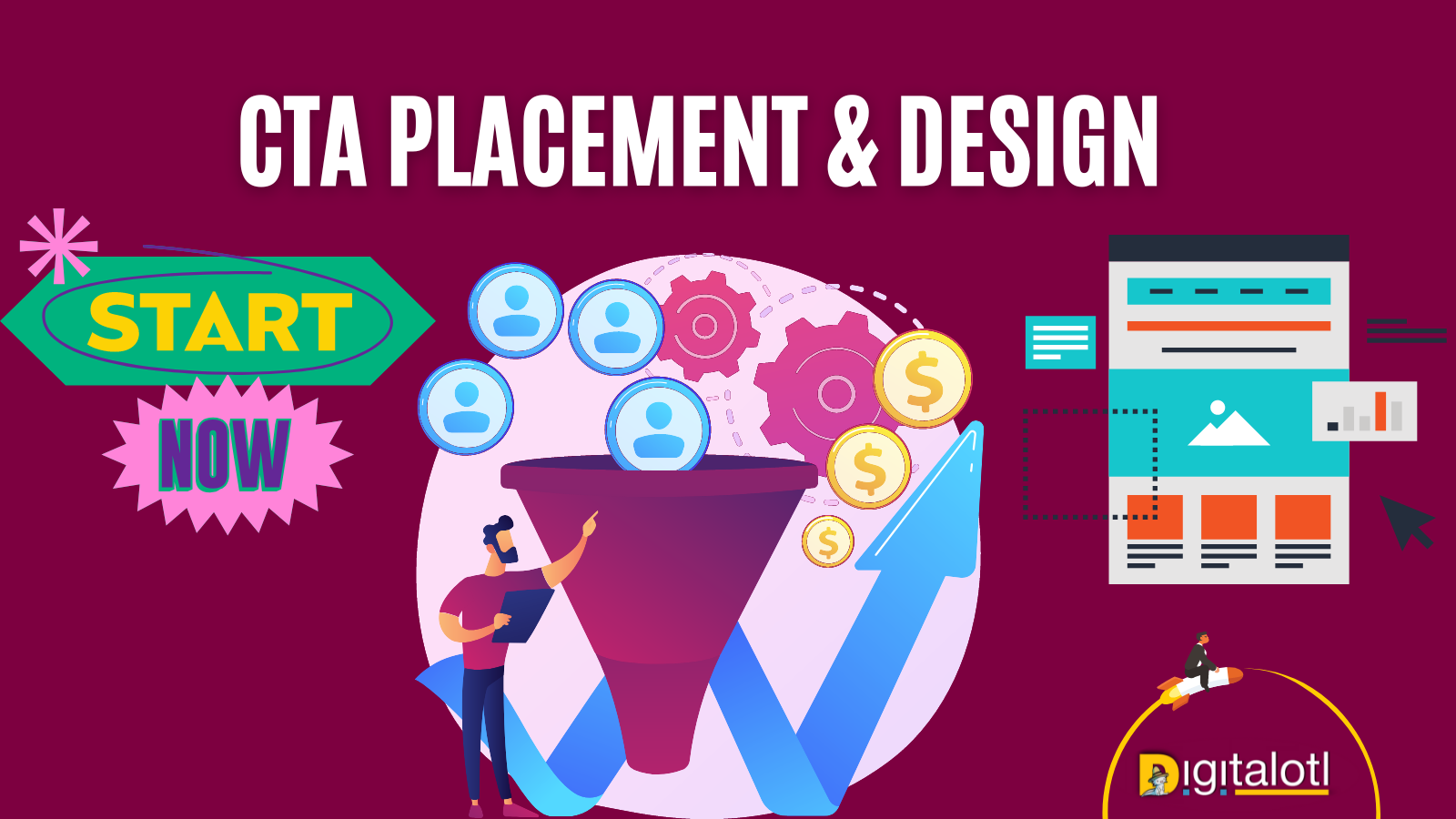
The call-to-action (CTA) stands as a pivotal component within your landing page, compelling visitors to embark on the intended action. Consider the following tips for creating a compelling CTA.
What is CTA?
A call-to-action (CTA) is a button, link, or text that prompts users to take a specific action, such as “Buy Now,” “Sign Up,” or “Download Now.” It should be highly visible, clearly communicate the action you want users to take, and create a sense of urgency or value.
Creating a Compelling Call-to-Action
To create a compelling CTA, use sense of urgency and prompts for the immediate engagement. Make the CTA button stand out by using a contrasting color, and consider adding additional elements like arrows or icons to draw attention. Clearly communicate the benefit or value users will gain by clicking on the CTA.
Best Practices for CTA Placement and Design
Place your CTA prominently on your landing page, ensuring that it is immediately visible without the need for scrolling. Consider using multiple CTAs throughout the page to provide additional opportunities for conversion. Test different CTA placements, colors, and wording to determine what works best for your target audience.
Tips for Improving CTA Conversion Rates
To improve CTA conversion rates, ensure that your landing page copy aligns with the CTA messaging. Create a sense of urgency by using phrases like “Limited Time Offer” or “Act Now.” Use A/B testing to experiment with different CTAs and determine which variations drive the highest conversion rates.
A/B Testing
A/B testing, also known as split testing, is a valuable technique for optimizing your landing pages and maximizing conversion rates. By comparing two different versions of a page, you can identify which elements or variations are more effective in achieving your conversion goals.
Understanding A/B Testing
A/B testing involves creating two or more versions of a landing page with slight variations in design, copy, or layout. These versions are then randomly presented to visitors, and their behavior and conversion rates are analyzed to determine the most effective variation.
Benefits of A/B Testing for Conversion Rate Optimization
A/B testing provides valuable insights into how small changes can impact conversion rates. Through continuously testing and refinement of your landing pages, you can make data-driven decisions that result in higher conversion rates and improved business success.
Tips for Conducting Effective A/B Tests
When conducting A/B tests, focus on testing one element at a time, such as headlines, images, or CTAs. Make sure that your sample size is sufficient to obtain statistically significant results. Monitor the test results and make informed decisions based on the data collected.
Social Proof
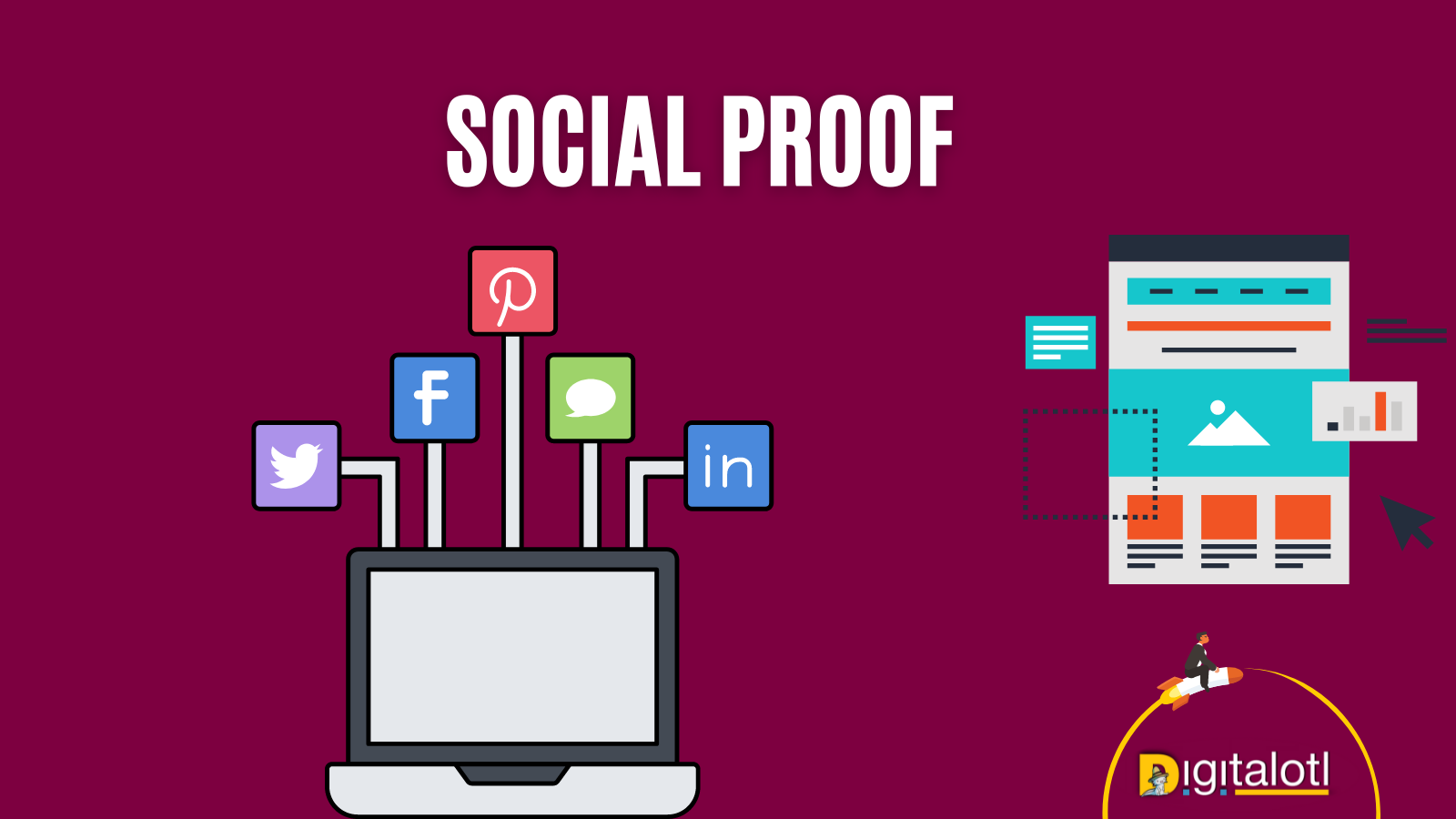
Social proof is a powerful psychological concept that can significantly impact conversion rates. By showcasing positive feedback, testimonials, reviews, or endorsements, you can build trust and credibility with your audience.
Significance of Social Proof in Enhancing Conversion Rate Optimization
Social proof acts as a validation mechanism for potential customers. When they see others who have had a positive experience with your product or service, they are more likely to trust your brand and take the desired action.
Types of Social Proof
There are several types of social proof you can incorporate on your landing pages:
1. Testimonials: Genuine testimonials from satisfied customers can be displayed prominently on your landing page to demonstrate the value and credibility of your offering.
2. Case Studies: Showcase real-life examples of how your product or service has helped customers achieve their goals or solve their problems.
3. Reviews and Ratings: If applicable, display ratings or reviews from reputable platforms to provide unbiased feedback and increase trust.
4. Social Media Mentions: Highlight positive mentions or interactions with your brand on social media to showcase a strong and engaged customer community.
Tips for Incorporating Social Proof on Your Landing Pages
Place social proof elements strategically throughout your landing page, ensuring they are highly visible and easily scannable. Use actual customer names and photos whenever possible to enhance credibility. Consistently renew and refresh your social proof to uphold its relevance and effectiveness.
User Experience Optimization
The user experience (UX) of your landing page plays a vital role in capturing and retaining the attention of visitors. By optimizing the UX, you can improve engagement, reduce bounce rates, and increase the likelihood of conversion.
Importance of User Experience
A positive user experience is crucial for creating a seamless and enjoyable interaction between your visitors and your landing page. A well-designed and user-friendly page enhances trust, improves brand perception, and encourages users to explore further.
Factors That Affect User Experience
Several factors influence the user experience on your landing page:
1. Page Load Speed: Slow-loading pages can lead to frustration and high bounce rates. Optimize your page load speed to provide a smooth and fast experience. To check your Page speed or performance you can Visit to GTmetrix website or check from Google’s Page Speed test.
2. Mobile Responsiveness: With the increasing use of mobile devices, ensure that your landing page is fully responsive and displays correctly on different screen sizes.
3. Navigation and Structure: Make it easy for users to navigate through your landing page by providing clear headings, subheadings, and a logical flow of information.
4. Intuitive Design: Use intuitive design elements, such as familiar icons and navigation patterns, to enhance usability and reduce cognitive load.
Tips for Improving User Experience
Execute usability testing to pinpoint any areas of concern or opportunities for enhancement. Simplify the design and layout of your landing page to focus on the most important elements. Incorporate user feedback and insights to continuously optimize and refine the user experience.
Landing Page Optimization
Landing page optimization is an ongoing process that involves continuously improving your landing pages based on data-driven insights and user feedback. By embracing a growth-driven design approach, you can achieve continuous optimization and achieve better results over time.
Growth-Driven Design
Growth-driven design is a methodology that focuses on iterative and data-driven improvements. Instead of launching a fully polished landing page from the start, you start with a minimal viable version and gather feedback and data to inform future iterations.
How to Continuously Optimize Your Landing Pages
To continuously optimize your landing pages, follow these steps:
1. Analyze Data: Regularly review landing page analytics to identify areas of improvement. Monitor conversion rates, bounce rates, click-through rates, and other relevant metrics.
2. Conduct A/B Testing: Test different variations of your landing page elements to determine what drives the highest conversion rates.
3. Implement Feedback: Gather feedback from users through surveys, user testing, or customer support interactions. Use this feedback to implement precise enhancements.
4. Monitor Competition: Keep an eye on your competitors’ landing pages and industry trends. Identify opportunities for differentiation and innovation.
Landing Page Analytics
Landing page analytics provide valuable insights into the performance of your pages and help you make data-driven decisions for optimization. Consider the following key metrics to track:
1. Conversion Rate: Measure the percentage of visitors who take the desired action on your landing page, such as making a purchase or submitting a form.
2. Bounce Rate: Track the percentage of visitors who leave your landing page without interacting further. A high bounce rate may indicate a mismatch between expectations and the page content.
3. Click-Through Rate (CTR): Measure the percentage of users who click on your call-to-action (CTA) button or other links on the landing page.
4. Time on Page: Monitor how long visitors spend on your landing page. A longer average time on page may indicate higher engagement and interest.
Tips for Using Analytics to Improve Conversion Rates
Regularly analyze your landing page analytics to identify areas for improvement. Compare different variations of your landing pages and assess their impact on key metrics. Use the insights gained to make informed decisions and optimize your pages accordingly.
Mobile Optimization
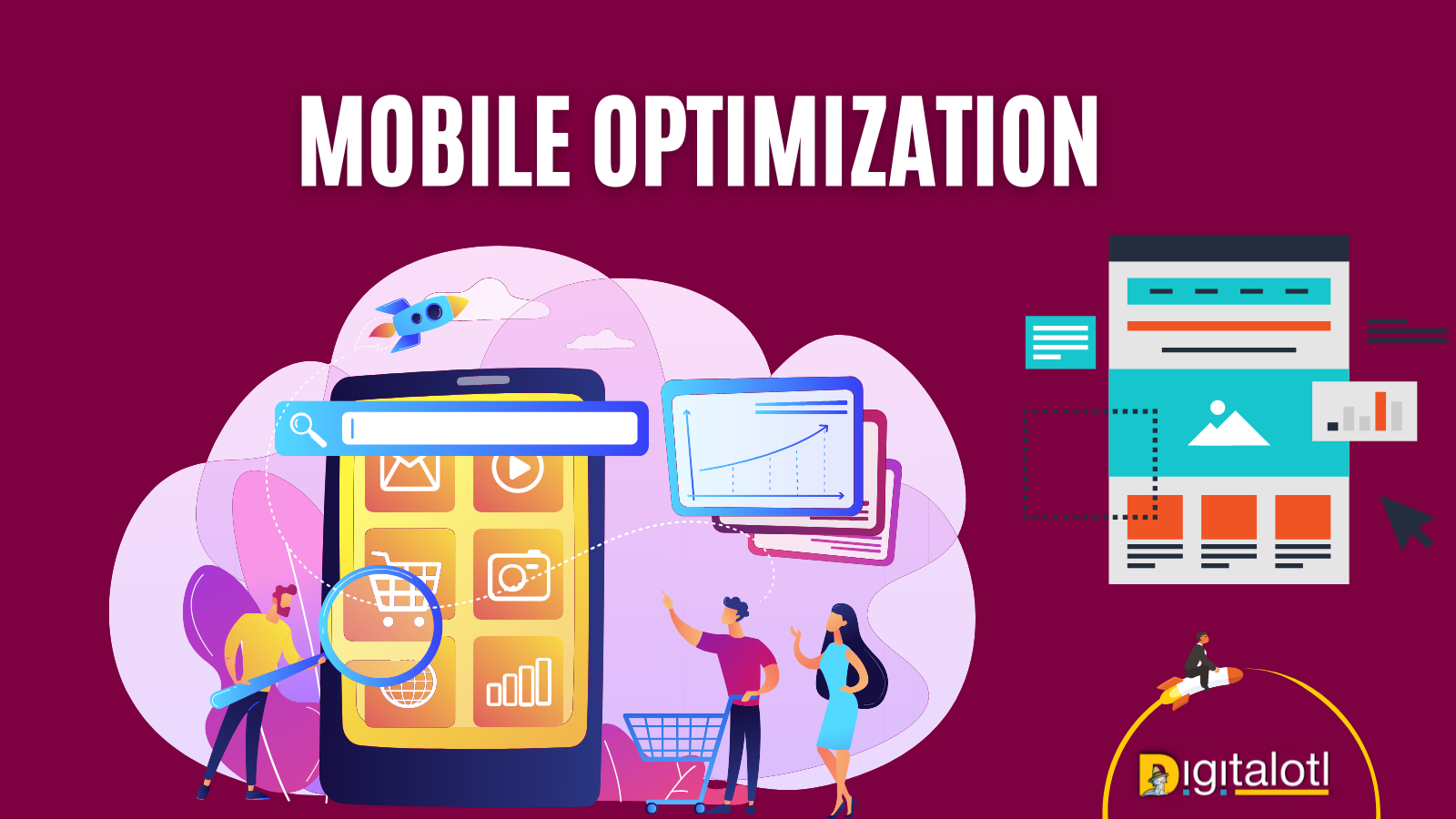
In today’s mobile-centric world, optimizing your landing pages for mobile devices is crucial. Mobile responsiveness and user experience are key factors in driving conversions and ensuring a positive interaction with your brand.
The Importance of Mobile Optimization
With mobile devices accounting for a significant portion of web traffic, a mobile-optimized landing page is essential for reaching and engaging your target audience effectively. A seamless mobile experience leads to higher conversion rates and improved user satisfaction.
Mobile Responsive Design
Mobile responsive design ensures that your landing page adapts to different screen sizes and devices. It allows for optimal viewing and interaction, regardless of whether the user is accessing the page from a desktop, smartphone, or tablet.
Tips for Mobile Optimization
When optimizing your landing pages for mobile devices, consider the following tips:
1. Simplify Design: Streamline your design and remove unnecessary elements to enhance the mobile user experience. Use larger fonts and buttons to facilitate seamless navigation.
2. Fast Load Times: Mobile users expect fast-loading pages. Optimize images and reduce unnecessary scripts or code to improve load times.
3. Clear Call-to-Action: Ensure that your call-to-action (CTA) is prominently displayed and easily clickable on smaller screens. Consider using sticky headers or footers to keep the CTA visible as users scroll.
SEO Optimization
Search engine optimization (SEO) plays a vital role in improving the visibility and discoverability of your landing pages in search engine results. By following SEO best practices, you can increase organic traffic and attract highly relevant visitors.
Importance of SEO Optimization for Landing Pages
SEO optimization helps your landing pages rank higher in search engine results, making it easier for potential customers to find you. By targeting relevant keywords, optimizing meta tags, and building high-quality backlinks, you can improve your landing page’s visibility and organic traffic.
SEO Best Practices
When optimizing your landing pages for search engines, consider the following best practices:
1. Keyword Research: Identify relevant keywords that align with your landing page content and target audience. Incorporate these keywords naturally throughout the page, including in headings, subheadings, and body copy
2. Meta Tags: Optimize your page’s meta title and meta description with relevant keywords and compelling, concise descriptions that entice users to click.
3. URL Structure: Use clean and descriptive URLs that include targeted keywords and provide a clear hierarchy of page content.
4. High-Quality Content: Create valuable, informative, and engaging content that satisfies user search intent. Use keyword variations naturally to enhance relevance.
5. Link Building: Build high-quality backlinks from reputable websites by creating valuable content that others find worthy of linking to. This can improve your landing page’s authority and visibility in search results.
Use Keywords to Improve Landing Page Visibility
Identify and target relevant keywords that are highly searched by your target audience. Incorporate these keywords strategically into your landing page’s headings, subheadings, and body copy. Use keyword variations and long-tail keywords to capture a wider range of search queries.
Landing Page Examples
Analyzing successful landing pages can provide inspiration and insights into effective design and optimization strategies. By understanding the elements that contribute to their success, you can apply similar techniques to your own landing pages.
Inspirational Landing Page Examples
Study landing pages from various industries to gain inspiration. Look for elements like compelling headlines, clear CTAs, persuasive copy, captivating visuals, and social proof.
Analysis of Winning Landing Pages
Analyze landing pages that consistently drive high conversion rates. Consider the layout, color schemes, typography, use of whitespace, and overall design principles that contribute to their success.
Breakdown of Landing Page Elements for Conversion Rate Optimization
Break down the elements of winning landing pages to understand how each contributes to higher conversion rates. Pay attention to the placement and design of CTAs, the clarity of the messaging, and the overall flow of information.
Conclusion
Creating compelling landing pages is crucial for driving conversions and achieving business success. By understanding your target audience, crafting persuasive copy, optimizing the design and user experience, and continuously testing and optimizing, you can create landing pages that outrank your competitors and achieve higher conversion rates.
Remember, the process of creating high-converting landing pages is an ongoing journey. Stay updated with industry trends, track performance metrics, and consistently improve your landing pages to achieve optimal results.
Frequently Asked Question (FAQs)
Q1: What is a landing page?
A landing page is a standalone web page specifically designed to capture visitor’s attention and prompt them to take a specific action. It is where users “land” after clicking on a link from an advertisement, search engine results page, or other marketing channels. Landing pages are created with the purpose of achieving a particular conversion goal, such as signing up for a newsletter, downloading an ebook, or making a purchase.
Q2: How do I create a successful landing page?
Creating a successful landing page involves a combination of strategic planning, compelling design, persuasive copywriting, and optimization techniques. Below are essential guidelines to adhere to:
- Define Your Goal: Clearly identify the desired action or conversion you want visitors to take on your landing page.
- Know Your Audience: Understand your target audience’s needs, motivations, and pain points to tailor your messaging accordingly.
- Craft a Compelling Headline: Create a headline that grabs attention and clearly communicates the value proposition of your offer.
- Write Persuasive Copy: Use persuasive language to highlight the benefits of your offer and address any potential objections.
- Use Engaging Visuals: Incorporate relevant and visually appealing images or videos that support your message.
- Keep it Simple and Focused: Avoid clutter and distractions, ensuring that the content on your landing page is concise and focused.
- Design an Intuitive Layout: Organize the elements of your landing page in a logical and intuitive manner, guiding visitors towards the desired action.
- Create a Clear Call-to-Action (CTA): Use a prominent and compelling CTA button that clearly instructs visitors on what they need to do next.
- Optimize for Mobile: Ensure that your landing page is mobile-responsive and displays correctly on various devices.
- Test and Iterate: Continuously test different elements of your landing page, such as headlines, visuals, and CTAs, to optimize for better conversion rates.
Q3: Why should I optimize my landing pages for conversion rates?
Optimizing your landing pages for conversion rates is essential for maximizing the return on your marketing investment and achieving your business goals. Here’s why it’s important:
- Higher Conversion Rates: By optimizing your landing pages, you increase the likelihood of visitors taking the desired action, such as making a purchase or submitting a form. This translates into higher conversion rates and more valuable leads or customers.
- Improved User Experience: Optimization techniques, such as clear messaging, intuitive design, and faster load times, enhance the user experience. A positive experience increases engagement and encourages visitors to stay on your page and complete the desired action.
- Cost-Effectiveness: Optimizing your landing pages can result in better conversion rates without increasing your marketing budget. It allows you to extract more value from your existing traffic and generate higher returns on your marketing spend.
- Data-Driven Insights: Through testing and analyzing the performance of your landing pages, you gain valuable insights into user behavior, preferences, and preferences. This data helps you make informed decisions and further optimize your campaigns.
- Competitive Advantage: In a crowded online landscape, businesses that invest in landing page optimization gain a competitive edge. By delivering a seamless and compelling user experience, you stand out from the competition and build trust with your audience.
Remember, landing page optimization is an ongoing process. For Such articles you can visit Digitalotl Blog Page.

